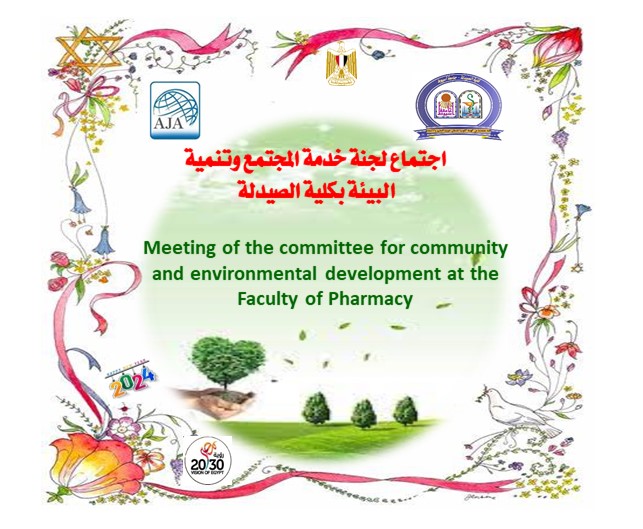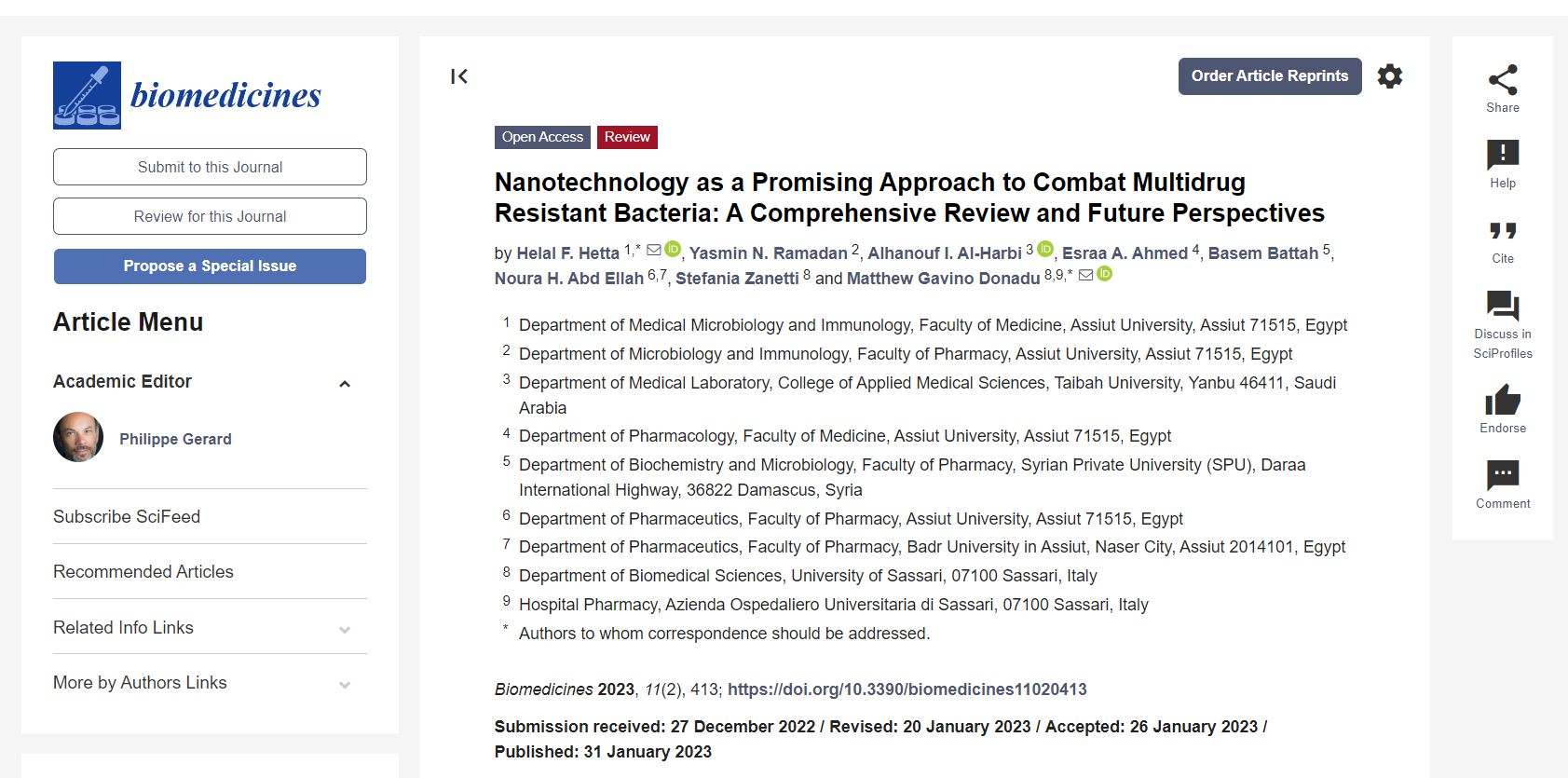Meeting of the Executive Committee (Clinical Pharmacy Program) on Wednesday, June 12, 2024


 Do you have any questions? (088) 2080369 - 2345622 Pharmacy_QAAU@pharm.aun.edu.eg
Do you have any questions? (088) 2080369 - 2345622 Pharmacy_QAAU@pharm.aun.edu.eg



God willing, a meeting of the committee for community and environmental development will hold on Monday, June 10, 2024, 2024, at ten o’clock in the morning.
In the office of Vice Dean for Community Services and Environmental Development Affairs.

God willing, the laboratories and scientific equipment committee will hold it's on Monday, June 10, 2024, at eleven o’clock in the morning.
in the office of Vice Dean for Community Services and Environmental Development Affairs.
Background: Drug-related problems (DRPs) are widespread in hospitalized
neonates, but studies on the prevalence of DRPs in this population are limited.
The presence of clinical pharmacists on multidisciplinary teams helps prevent and
reduce DRPs.
Aim: This investigation aimed to identify and classify the incidence of DRPs in the
neonatal intensive care unit (NICU), to determine the determining factors
associated with DRPs and to document clinical pharmacists’ interventions,
outcomes, acceptance rates and clinical significance.
Method: A prospective descriptive hospital study was conducted from August to
November 2023 at the NICU of Children’s University Hospital, Assiut University,
Egypt. DRPs were classified using the Pharmaceutical Care Network of Europe
(PCNE) classification V9.1.
Results: Three hundred sixteen neonates were included in the study, with a mean
gestational age of 34 ± 4 weeks and a mean birth weight of 2.03 ± 0.85 kg. A total
of 1723 DRPs occurred among 283 neonates (89.6%), an average of 5.5 ± 5.1 DRPs
per patient. The main types were treatment effectiveness (P1) (799, 46.4%),
followed by others (P3) (469, 27.2%), and treatment safety (P2) (455, 26.4%).
The leading causes were dose selection (C3) (1264, 61.9%) and “other domain”
(C9) (543, 26.6%). Of the 2149 interventions introduced by pharmacists, 98.8%
were accepted and 93% were accepted, and fully implemented. As a result, 92% of
the DRPs were resolved. Both length of hospital stay and number of medications
were significantly associated with DRPs.
Conclusion: DRPs are common in the NICU; this study demonstrated the crucial
role of clinical pharmacists in identifying and resolving DRPs.
Simvastatin (SV) is a poorly soluble drug; its oral administration is associated with a significant problem: Myopathy. The present study aims to formulate SV microsponges that have the potential to minimize the myotoxicity accompanying the oral administration of the drug. SV microsponges were prepared by exploiting the emulsion solvent evaporation technique. The % entrapment efficiency (%EE) of the drug approached 82.54 ± 1.27%, the mean particle size of SV microsponges ranged from 53.80 ± 6.35 to 86.03 ± 4.79 µm in diameter, and the % cumulative drug release (%CDR) of SV from microsponges was significantly higher than that from free drug dispersion much more, the specific surface area of the optimized microsponges formulation was found to be 16.6 m2/g revealed the porosity of prepared microsponges. Histological and glycogen histochemical studies in the skeletal muscles of male albino rats revealed that microsponges were safer than free SV in minimizing myotoxicity. These findings were proven by Gene expression of Mitochondrial fusion and fission (Mfn1) & (Fis1) and (Peroxisome proliferator-activated receptor gamma co-activator 1α) PGC-1α. Finally, our study ascertained that SV microsponges significantly decreased the myotoxicity of SV.
Three factors, three levels (33) full factorial design was used to develop venlafaxine HCl fast dissolving oral films (FDOFs) to optimize the concentrations of the film forming polymer; hydroxypropyl methylcellulose HPMC (X1), superdisintegrant; sodium starch glycolate SSG, (X2) and glycerol as the film plasticizer (X3). Effects of the three factors on the disintegration time (Y1), swelling index (Y2), and dissolution efficiency at 15 min; DE%15 (Y3) of the prepared FDOFs were evaluated by using statistical models. The optimized film formula was characterized in term of x-ray powder diffraction (XRPD), differential scanning calorimetry (DSC) and morphological characteristics.
Disintegration time was found to increase with the increase in HPMC (X1) concentration, and the shortest disintegration time (21.67 ± 2.08 s) was observed in case of F2 formula (lowest HPMC level and highest glycerol level in absence of SSG). The highest swelling index (3.64 ± 0.59) was observed in case of film formula F1 (medium concentrations of both HPMC and glycerol and highest SSG concentration. The results also indicated that as the concentration of HPMC increased the DE%15 decreased. SSG (X2), with highest value (72.33 ± 1.71%) was recorded for in case of F12 (using 2% HPMC, 5%SSG and 1.5% glycerol). The optimized FDOF formula derived by the statistical models suggested 2% HPMC, 5% SSG, and 1% glycerol.
The data obtained from DSC and XRPD revealed no interaction between drug and FDOT excipients. In addition, XRPD studies proved that the venlafaxine HCl was homogeneously dispersed in the film matrix.
Background: Drug-resistant bacteria are major determinants of hospital-acquired infections that are particularly troublesome in intensive care units (ICU). Klebsiella pneumoniae (K. pneumoniae) is one of the most prevalent causes of nosocomial pneumonia. To overcome the problem of antibiotic-resistant pathogens and stop their spreading, it is crucial to describe the pattern of resistance to antibiotics particularly to the β-lactam group. Therefore, in this study we aimed to determine the rates of extended-spectrum β-lactamases (ESBL) and metallo β- lactamases (MBL) producing K. pneumoniae isolates in severely ill hospitalized patients suffering from nosocomial pneumonia. Methods: This was a cross-sectional study that included one hundred patients with hospital acquired pneumonia (HAP) and admitted to Respiratory Intensive Care Unit (RICU) in Assiut University Hospitals, Egypt. Sputum samples were collected and subjected to microbiological analyses to isolate the pathogens. Then, screening, and phenotypic confirmatory tests for ESBL and MBL production among K. pneumoniae isolates were carried out. Results: The prevalence of K. pneumoniae was 48%. Preliminary screening showed that all isolates were resistant to Ceftazidime (CAZ) and Cefotaxime (CTX), 45/48 (93.75%) were resistant to imipenem (IMP). Confirmatory testing showed that 10/48 (20.83%) isolates were ESBL producers, while 36/48 (80%) isolates were MBL producers and 2/48 (4.17%) were ESBL and MBL producers. Conclusion: The rate of β-lactamases production by K. pneumoniae is seriously high, the most frequent type of β-lactamase in K. pneumoniae was the MBL, followed by ESBL. The application of infection control measures and antimicrobial stewardship are highly recommended to decrease emergence and spread of drug-resistant strains.
The wide spread of antibiotic resistance has been alarming in recent years and poses a serious global hazard to public health as it leads to millions of deaths all over the world. The wide spread of resistance and sharing resistance genes between different types of bacteria led to emergence of multidrug resistant (MDR) microorganisms. This problem is exacerbated when microorganisms create biofilms, which can boost bacterial resistance by up to 1000-fold and increase the emergence of MDR infections. The absence of novel and potent antimicrobial compounds is linked to the rise of multidrug resistance. This has sparked international efforts to develop new and improved antimicrobial agents as well as innovative and efficient techniques for antibiotic administration and targeting. There is an evolution in nanotechnology in recent years in treatment and prevention of the biofilm formation and MDR infection. The development of nanomaterial-based therapeutics, which could overcome current pathways linked to acquired drug resistance, is a hopeful strategy for treating difficult-to-treat bacterial infections. Additionally, nanoparticles’ distinct size and physical characteristics enable them to target biofilms and treat resistant pathogens. This review highlights the current advances in nanotechnology to combat MDR and biofilm infection. In addition, it provides insight on development and mechanisms of antibiotic resistance, spread of MDR and XDR infection, and development of nanoparticles and mechanisms of their antibacterial activity. Moreover, this review considers the difference between free antibiotics and nanoantibiotics, and the synergistic effect of nanoantibiotics to combat planktonic bacteria, intracellular bacteria and biofilm. Finally, we will discuss the strength and limitations of the application of nanotechnology against bacterial infection and future perspectives

Medicinal compounds from plants include bicyclo[3.3.1]nonane derivatives, the majority of which are polycyclic polyprenylated acylphloroglucinols (PPAPs). Prototype molecules are hyperforin, the antidepressant constituent of St. John’s wort, and garcinol, a potential anticancer compound. Their complex structures have inspired innovative chemical syntheses, however, their biosynthesis in plants is still enigmatic. PPAPs are divided into two subclasses, named type A and B. Here we identify both types in Hypericum sampsonii plants and isolate two enzymes that regiodivergently convert a common precursor to pivotal type A and B products. Molecular modelling and substrate docking studies reveal inverted substrate binding modes in the two active site cavities. We identify amino acids that stabilize these alternative binding scenarios and use reciprocal mutagenesis to interconvert the enzymatic activities. Our studies elucidate the unique biochemistry that yields type A and B bicyclo[3.3.1]nonane cores in plants, thereby providing key building blocks for biotechnological efforts to sustainably produce these complex compounds for preclinical development.

